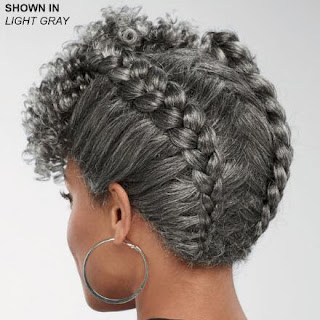Human Braiding vs Kanekalon Braiding Hair: Top Differences
Kanekalon Braiding Hair
Braids are the go-to protective style when working with natural hair because they are highly adaptable and beneficial to one's hair health. You can give your natural hair a well-deserved break from daily maintenance by wearing a lovely set of braids.
But there's always the mane battle: human braided hair versus kanekalon braided hair.
While synthetic hair has improved in its ability to mimic the look and feel of human hair, an imitation will never be better than a genuine article. In short, human braiding hair far outperforms kanekalon braiding hair.
A. What is Kanekalon Braiding Hair?
Kanekalon braiding hair is the most commonly used braiding hair in synthetic hair extensions. Kanekalon braiding hair is made from modacrylic fiber.
Controversial toxic fibers used in kanekalon braiding hair include acrylonitrile and vinyl chloride. This fiber contributes to the braiding hair being flame resistant and resistant to dripping or melting.
Kanekalon is created by heating and stringing low-grade acrylic into strands to create individual hair fibers. These strands are then tied together to make extensions for wigs, weaves, and braiding hair.
Hot water can also be used to set braided hair. If Kanekalon's braiding hair is curled or braided, hot water will seal and hold the hairdo in place, preventing it from falling out.
B. Features oF Kanekalon Braiding Hair
1. Kanekalon braiding hair is coarser and more crimped, similar to Afro-Caribbean human hair.
2. Because of its coarseness, it is heavier braiding hair that isn't as soft as other types of braiding hair.
3. For a refined braided finish, Kanekalon braiding hair is stretched and feathered before installation.
C. Human Braiding Hair
Human braiding hair is made from human hair, either from a single donor or from multiple donors, to form a braiding bundle. Human hair is primarily sourced from India, Vietnam, and other Asian countries.
Human hair is classified into two types: Remy human hair and non-Remy human hair.
1. Remy hair is collected from a single donor with all cuticles intact and pointing in the same direction. As a result, the hair is free of tangles.
2. Non-Remy hair is derived from multiple donors and lacks cuticles.
The primary distinctions between Remy and non-Remy hair are the collection method and how the cuticles are aligned.
D. Human Hair vs. Synthetic Hair
The realistic finish is one of the primary distinctions between synthetic and human hair. While Kanekalon braiding hair is a high-quality synthetic, it cannot compete with Remy human hair.
Women recognize and value human braiding hair for its ability to blend seamlessly with natural hair for various protective hairstyles. Human braiding hair has all of the characteristics of natural hair, from the look and feel to the movement.
Buy kanekalon braiding hair in bulk, it is a superior synthetic fiber to other synthetic fibers. It moves more naturally than other synthetic extensions and has a less wiry appearance.
However, if the kanekalon fibers are too plasticky or "hard," the friction caused by the constant braiding motion will cause the fingers to burn.

.jpg)


Comments
Post a Comment